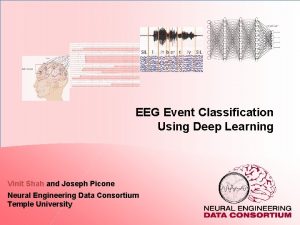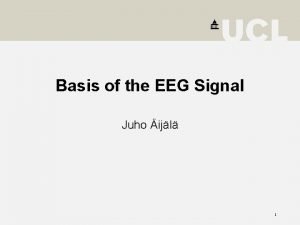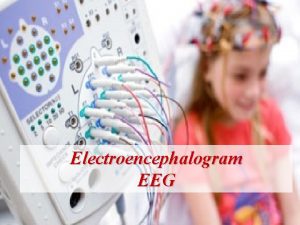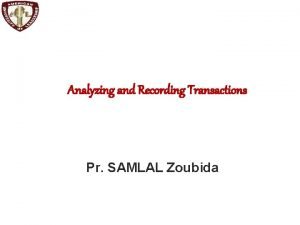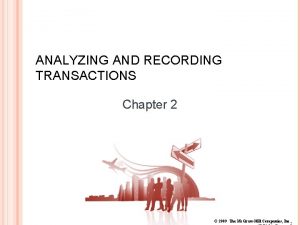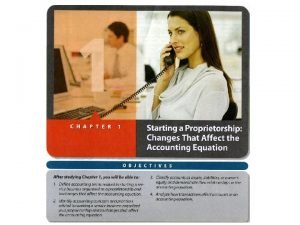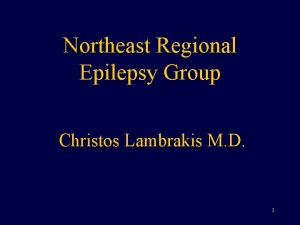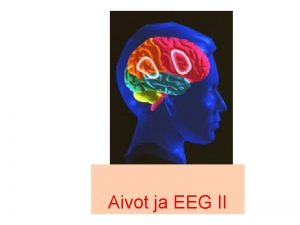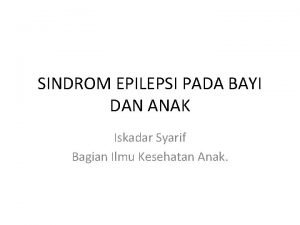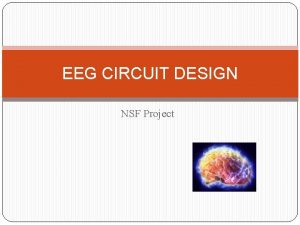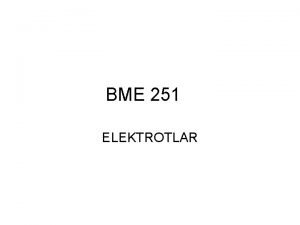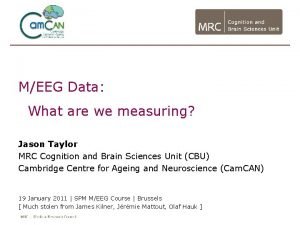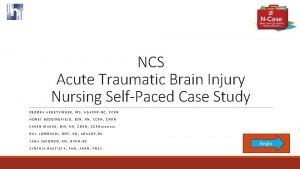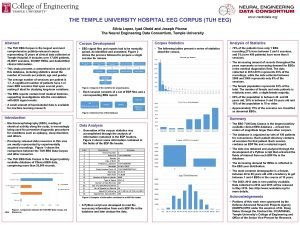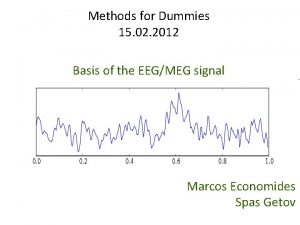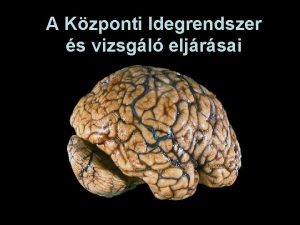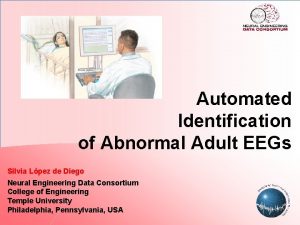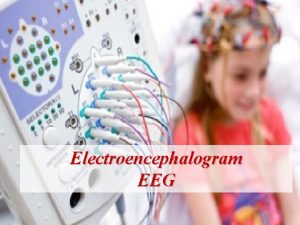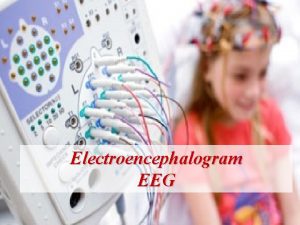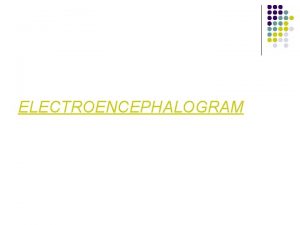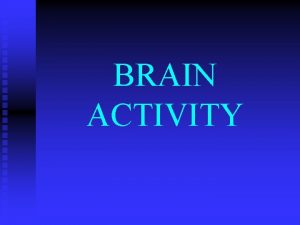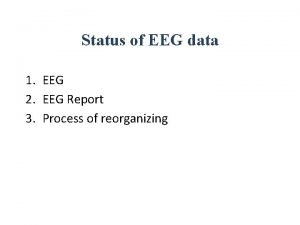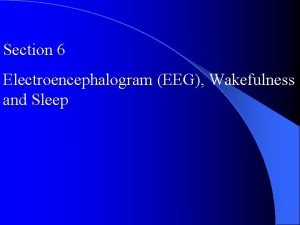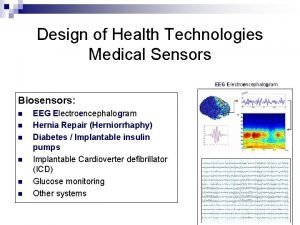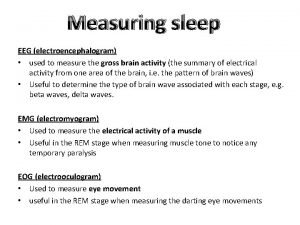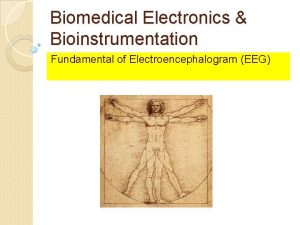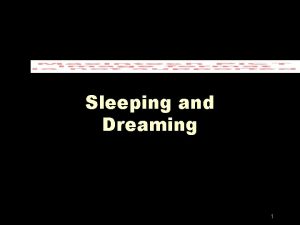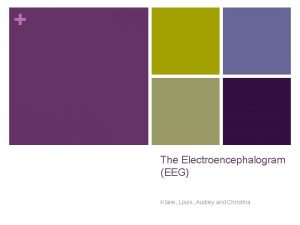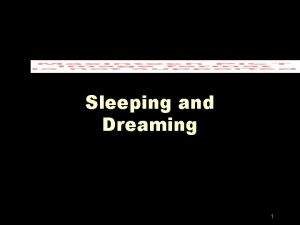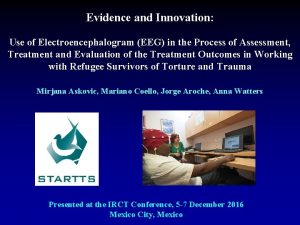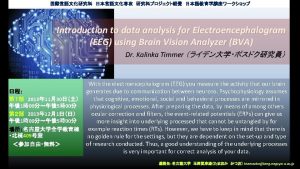Recording the Electroencephalogram EEG Recording the EEG Analyzing

















- Slides: 17

Recording the Electroencephalogram (EEG)

Recording the EEG

Analyzing EEG Waves Frequency Waveform or morphology Spatial distribution

EEG Frequency Bands 76479 Beta 12. 5 - Hz 23 Hz 64279 Alpha 8 -12 Hz 9 Hz 64727 Theta 4 - 7 Hz 6. 5 Hz 75245 Delta 0. 5 - 3 Hz 1. 7 Hz

Factors That Determine Whether an EEG Feature is Normal or Abnormal • Patient Related: – Age – State of consciousness

Usefulness of the EEG • The Clinical EEG is of greatest value in: Epilepsy Coma – atypical or complicated Other disturbances of consciousness of uncertain cause

The study of the EEG remains essential to the diagnosis and treatment of epilepsy – History / Clinical impression is not always clear • • • Fit, faint or “funny turn” ? Focal or generalised Idiopathic / symptomatic / syndromic

EEG Patterns and their Specificity Signature Patterns

3 /sec Spike and Wave – the signature of Typical Absence Seizures 1 sec Onset epileptiform

Hypsarhythmia – the signature of West Syndrome ( Infantile Spasms)

Usefulness of the EEG in the diagnosis and classification of epilepsy – 13 year-old male child • Recurrent headaches and fainting. • CT normal, neurologically normal. – Description of fainting episodes: • Becomes “quiet”, falls to ground, brief “twitching of limbs”, followed by confusion • First episode 2005. Approximately 3 x year. • Family Hx – Younger sibling with seizures. – Can EEG help to confirm a Sz disorder? • If so, ? generalized or focal • Idiopathic / symptomatic ?

13 yo male EEG Background 76631 P 10 -11 Hz

13 yo male Neurology OPD Bipolar recording 76631 P

Hx of 4 year-old boy • Daily “staring spells” in nursery school • No birth injury or trauma • Neurologically normal • Paternal uncle known with epilepsy Referring doctor: • ? Absences – typical or otherwise

4 year-old boy, awake 75241


Sensitivity of the EEG • In what proportion of subjects with epilepsy can the EEG confirm epilepsy? 50% positive for epilepsy on recording the first routine 20 min EEG. Ways to improve sensitivity: • Sleep can increase the yield by further 40% • Recording during a period of increased number of seizures or shortly after a seizure A negative EEG does not rule out possibility of a seizure disorder.
 Electroencephalogram
Electroencephalogram Electroencephalogram
Electroencephalogram Electroencephalogram nursing responsibilities
Electroencephalogram nursing responsibilities Analyzing and recording transactions
Analyzing and recording transactions Analyzing and recording transactions
Analyzing and recording transactions Planning recording analyzing and interpreting
Planning recording analyzing and interpreting Xl spikes on eeg
Xl spikes on eeg Eeg tulkinta
Eeg tulkinta Mioklonik epilepsi
Mioklonik epilepsi Eeg photo
Eeg photo Eeg circuit design
Eeg circuit design Eeg elektrot çeşitleri
Eeg elektrot çeşitleri Eeg meg
Eeg meg Abdominal ultrasound scan glasgow
Abdominal ultrasound scan glasgow Tuh eeg corpus
Tuh eeg corpus Eeg for dummies
Eeg for dummies Rendr eeg
Rendr eeg Eeg results abnormal
Eeg results abnormal
